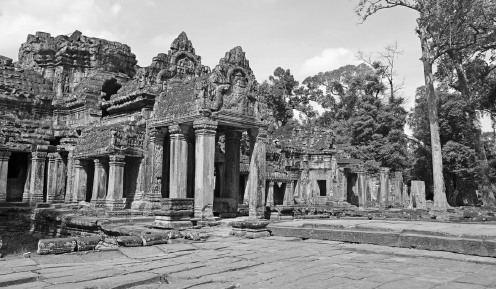
Temples in Angkor tell us the art and civilization of the Khmer Empire.(Photo by Xu Lin/China Daily)
After 700 years, what remains is more than just remains
More than 700 years ago, Zhou Daguan, a Chinese diplomat, recorded for posterity details of his stay in Angkor in The Customs of Cambodia, a work that would one day play a key role in the discovery of the abandoned, forest-clad Angkor by the French.
Apart from the book, the brick and stone temples that remain are the only tangible way for us of the 21st century to get to know about the art and civilization of the mysterious Khmer Empire of the 9th-14th centuries.
Angkor Wat was built as a state temple dedicated to Vishnu, one of the Hindu trinity, in the early 12th century.
Like other Khmer architecture, the temple boasts pyramids created by stepped terraces that symbolize a temple-mountain and concentric galleries of elegant bas-reliefs.
It is one of the world's largest religious monuments, a miniature of the Hindu universe, with its five central towers representing the peaks of Mount Meru.
The first carvings at the main entrance to catch the eye are the beautiful apsaras, female divinities in Hindu mythology. There are more than 2,000 of these in the temple, with different expressions, postures and hairstyles. The most unique is several meters south - revealing her teeth in a grin.
You have to cross a 350-meter-long causeway before climbing steep stairs to the central shrine at the towers.


















































